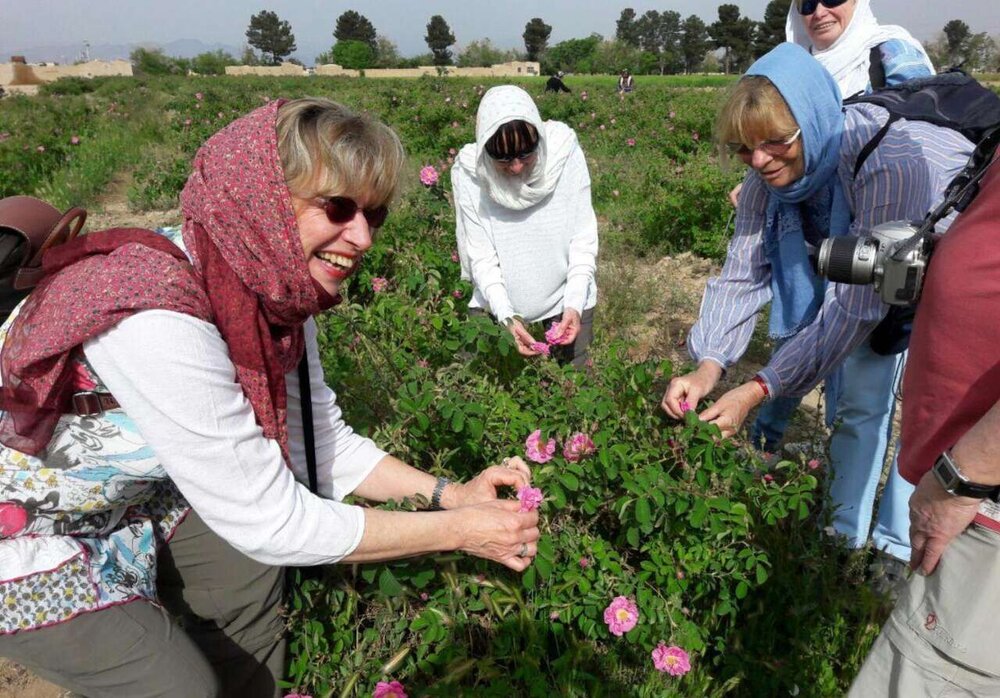Agritourism may shorten way to materialize 'Surge in Production’

TEHRAN - Agritourism, a relatively new branch of the travel industry in which tourists stay with local people in rural areas abroad, is deemed as a means to materialize the national goal of 'Surge in Production’.
The tourism industry, which itself plays a pivotal role in the growth of other industries and sectors in various regions and countries, not only generates revenues but also pushes up other related sectors and manufacturing and customer service jobs.
Some experts believe that boosting tourism will result in higher demand, new markets, and ultimately a rise in production, as Leader of the Islamic Revolution Ayatollah Ali Khamenei set the goal by naming the current Iranian calendar year as the ‘Year of Surge in Production', aiming to create a tangible change in people's lives.
Some believe that in addition to the customer services jobs, Agritourism pays special attention to the production sector, saying “For this reason, agricultural tourism is much more important and practical than other branches of tourism because it creates a new chain and diversity in the field of production and services.”
Farm/ranch recreation refers to activities conducted on private agricultural lands, which might include fee-hunting and fishing, overnight stays, educational activities, etc. This category of tourism is a subset of a larger industry known as agritourism. Agritourism is "a commercial enterprise at a working farm, ranch, or agricultural plant conducted for the enjoyment of visitors that generates supplemental income for the owner."
Agritourism and nature-tourism enterprises might include Outdoor recreation (fishing, hunting, wildlife study, horseback riding), educational experiences (cannery tours, cooking classes, or tea or coffee tasting), entertainment (harvest festivals or barn dances), hospitality services (farm stays, guided tours, or outfitter services), and on-farm direct sales (u-pick operations or roadside stands).
Agritourism is a subset of a larger industry called rural tourism that includes resorts, off-site farmers' markets, non-profit agricultural tours, and other leisure and hospitality businesses that attract visitors to the countryside.
Rural Tourism, however, differs from agritourism in two ways. First, rural tourism enterprises do not necessarily occur on a farm or ranch, or at an agricultural plant, they do not generate supplemental income for the agricultural enterprise.
To cite an example, we could refer to saffron farms in northeast Iran that are going to fame as a new destination for agritourism. Iranian Saffron is known as the “red gold”, saffron is a magical ingredient in Persian culture, from aromatic foods and colorful desserts, to the physical and spiritual medicine.
Every year, the saffron harvest season begins in early November. While most other vegetation is gone, the bright purple flowers cover the fields and create an outstanding landscape in dry regions in Iran. Major saffron producers of Iran are located on the east side of the country. If you would like to see the biggest market, head to Mashhad, which is also known for its religious importance.
Today, agritourism is regarded as a stimulus to the imbalanced economy of agriculture sectors and the tendency for emotional and nostalgic roots of the modern world citizens and due to factors such as visitor participation in farm activities, direct purchase of products, spending a night at a farm, curiosity and learning about the farm and agriculture products has been able to create a wide target population.
AFM/MG
